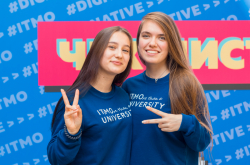The annual QS EECA ranking has been published since 2014 and is one of the regional rankings compiled by the QS Quacquarelli Symonds Ltd ranking agency (the UK). This ranking evaluates universities from developing European and Central Asian countries: Albania, Armenia, Azerbaijan, Belarus, Bosnia and Herzegovina, Croatia, Czech Republic, Estonia, Hungary, Georgia, Kazakhstan, Kosovo, Kyrgyzstan, Latvia, Lithuania, Macedonia, Moldavia, Montenegro, Poland, Romania, Russia, Serbia, Slovakia, Slovenia, Tajikistan, Turkmenistan, Turkey, Uzbekistan, and Ukraine. This year’s ranking includes 100 more universities than last year’s, with a total of 300 higher education institutions from 30 countries (in 2017, 200 universities made it to the list).
The ranking methodology remained the same as last year with only one alteration. The QS EECA methodology is different in some ways from the QS WUR’s one and is traditionally based on nine indicators such as academic reputation (30%), employer reputation (20%), faculty-student ratio (10%), the percentage of academic staff holding a degree (5%), citation index (5%), the amount of publication per researcher (10%), Web impact (according to the Webometrics ranking’s results) (5%), the percentage of international students (2.5%) and the percentage of international academic and research staff (2.5%).
This year, a new indicator has been added to the list, international research network (10%). This indicator is calculated based on data derived from the Scopus database and shows the university’s research collaboration activity. This is the highest indicator for ITMO University: it was placed 20th in the overall ranking.
ITMO goes up ten places
This year, ITMO University took 56th place in the overall ranking (while in 2017, it was ranked 66th). This significant growth can be credited to such criteria as academic and employer reputation, the number of publications per researcher, citation index, as well as the number of international staff and students.
Since the ranking’s first appearance, ITMO University has steadily gained in positions: the total growth over the five installments amounts to 35 positions. Among the areas that the University showed the best results in are international research network, Web impact, the percentage of academic staff holding a degree, and faculty-student ratio.
In total, 107 Russian universities made it to the ranking, 12 of which were ranked among the top-50. It is remarkable that it is Russian universities that took first and second places: Lomonosov Moscow State University and Novosibirsk State University, respectively. Charles University (Czech Republic) was ranked third, while St. Petersburg State University took fourth place.
The full results of QS EECA University Rankings can be seen here.




